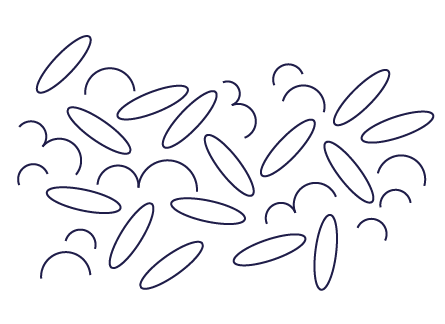Koji
This post is part of The Koji Club BINGO. Play the game to win a karaoke party and build your sake chops in the process. Learn more here.
Bippity-Boppity-Boo.
Koji is the magical ingredient that makes sake unlike any other beverage in the world. You might even call koji the fairy godmother of sake.
As light as fairy dust, a sprinkle of Aspergillus oryzae (the scientific name for koji) transforms the starches present in freshly steamed rice into the sweet, yeast-loving sugars that are key to unlocking alcohol production.
More technically, the rice is inoculated with the koji mold, becoming puffy and plump as the koji eats the proteins and fats till it finally feasts on what its after: the starchy center, or shinpaku. Though only a third of a batch of sake will contain this koji rice at the start, the koji works quickly to transform the rest of the rice in the tank, converting the rice from starch to sugar, unleashing flavor-packed enzymes along the way.
This transformation is so critical to the sake-making process, an entire room of the brewery is dedicated to it.
How Koji is Made
The koji room, or koji muro, is hot and humid – the ideal environment for koji to thrive. Having grown up in South Florida, I liken the room’s temperature and humidity to what my childhood summers felt like: hot and sticky with air so heavy you could cut it with a knife. (The irony that I now pay a pretty penny to go sit in a steam room is not at all lost on me…)
These environmental conditions are critical to a successful batch of koji and must be monitored scrupulously by the brewery workers, or kurabito, since ambient heat given off during the starch-to-sugar transformation can throw off the room’s heat and humidity. If conditions aren’t exactly what the koji needs, it will not propagate evenly and impact the flavors and aromas of the final product.
What might uncontrolled koji production taste like? A “faint, dark, and slightly moldy smell that hovers in the background of the flavor and fragrance,” says world-renowned sake expert John Gautner. Umm, no thank you. We’ll pass on that.
Could you imagine spending months upon months brewing sake just to have it turn out moldy-tasting? To prevent such a dreadful thing from happening, the kurabito take shifts to monitor the koji muro around the clock, making sure they never turn a batch by diligently recording temperature and humidity and evenly dispersing the koji rice around the room for consistency with inoculation. Clearly koji isn’t just a fairy godmother, but a diva, as well.
Yet once the koji rice has been properly inoculated, it’s off to the races, converting starch to sugar for it’s friend, yeast.
Koji + Yeast, The Relay Race Superstars
While the koji is busy converting the starch to sugar, yeast is right behind it to convert those sugars into alcohol. It is a process called multiple parallel fermentation and is found only in sake brewing.
This unique process means the koji is able to convert starch to sugar nearly simultaneously to the yeast converting sugars to alcohol. Without koji, yeast wouldn’t have anything to make alcohol with! No other alcoholic beverage goes through this style of fermentation.
While you certainly don’t need to remember multiple parallel fermentation, you should remember: without koji, there would be no sake.
How Koji Impacts Flavor
Koji is responsible for the high levels of amino acids present in sake, which is why it pairs so well with foods high in umami like cheese, meat, mushrooms and tomatoes. As a rule of thumb, sakes with a lower polishing rate like junmai and honjozo have a higher level of amino acids and umami.
While yellow koji is the industry standard for sake making across Japan, some brewers are experimenting with other strains to impart specific flavors. For example, Fukucho’s Head Brewer and President Miho Imada uses white koji in her Seaside Sparkling to impart a distinct citrus flavor reminiscent of the lemon trees native to Hiroshima’s coast where she brews.
Last year, I got to spend a day at Kato Sake Works in Brooklyn, New York, where I got my first IRL look at a big, bubbling vat of sake mid-fermentation. Hit over the head with aromas of banana and papaya, I was in disbelief that such a tropical fruit salad could be coming from what looked like rice-y oatmeal mush. But I knew that beneath the foamy, frothy surface, there was koji, making magic. ✨
EARN YOUR BINGO STICKER
This is a blog post from the The Koji Club Bingo Game. To complete the Bingo square, follow the steps below:
Step 1. Join us at The Koji Club bar for a glass of Fukucho Seaside Sparkling Sake.
Step 2. Present your BINGO card to the bartender for a sticker.
Step 3. If the square completes Bingo, post a picture of your winning Bingo card on Instagram with the hashtag #DrinkGoodSake and tag @the.koji.club. This is your entry to win a Karaoke Party at The Koji Club! Play as many times as you want entries. Winners will be drawn monthly.
EXTRA CREDIT: Post a picture of your sake with your own tasting notes (the wilder the better!) and the #DrinkGoodSake hashtag. Don’t forget to tag @The.Koji.Club to make sure we see it!

